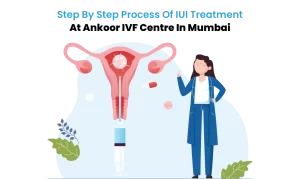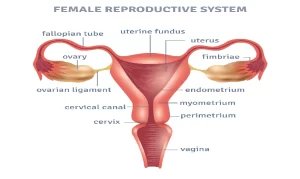In vitro fertilization (IVF) is a groundbreaking reproductive technology that has revolutionized the approach to treating infertility. This procedure offers hope to individuals and couples facing various fertility challenges. Understanding the nuances of IVF can help you make informed decisions about your fertility treatment options.
Understanding IVF Treatment
IVF, or In Vitro Fertilization, is a sophisticated process in which eggs are fertilized by sperm outside the body. The term “in vitro” refers to the laboratory environment where fertilization takes place, literally meaning “in glass.” Here’s a step-by-step guide to how IVF works:
Ovarian Stimulation: IVF begins with ovarian stimulation, a process that uses hormone injections to encourage the ovaries to produce multiple eggs rather than the single egg typically produced each menstrual cycle. The goal is to maximize the number of eggs available for fertilization. During this phase, your fertility specialist will perform regular ultrasounds and blood tests to monitor egg development and determine the optimal time for retrieval.
Egg Retrieval: Once the eggs have matured, they are collected through a procedure known as egg retrieval or follicular aspiration. This minor surgical procedure is performed under sedation to minimize discomfort. Using an ultrasound-guided needle, the specialist aspirates the eggs from the ovaries through the vaginal wall. The retrieved eggs are then prepared for fertilization.
Sperm Collection and Preparation: Sperm is collected from the male partner or a sperm donor. The sperm sample is processed in the laboratory to separate healthy sperm from those that are less viable. This preparation ensures that only the best quality sperm are used for fertilization.
Fertilization: In the laboratory, eggs and sperm are combined to initiate fertilization. This can be done through conventional insemination, where sperm and eggs are mixed in a petri dish, or through Intracytoplasmic Sperm Injection (ICSI), where a single sperm is directly injected into an egg. The choice of method depends on individual fertility factors and is designed to enhance the likelihood of successful embryo development.
Embryo Culture: The fertilized eggs, now embryos, are cultured in a controlled environment for several days. During this period, embryologists monitor the embryos to ensure they develop properly. The embryos may also undergo genetic testing to screen for potential abnormalities, providing valuable information about their viability.
Embryo Transfer: After a few days of development, one or more of the healthiest embryos are selected for transfer into the uterus. This procedure involves inserting a thin catheter through the vagina and cervix into the uterine cavity. The embryo(s) are then carefully placed in the uterus, where they have the potential to implant and develop into a pregnancy.
Pregnancy Testing: About two weeks after the embryo transfer, a blood test is conducted to determine if implantation was successful. This test measures the levels of human chorionic gonadotropin (hCG), a hormone produced during pregnancy.
Why Is IVF Performed?
IVF is often recommended for individuals and couples experiencing various fertility issues. Here’s a closer look at who might benefit from IVF:
Fallopian Tube Blockages: Blocked or damaged fallopian tubes can prevent eggs from meeting sperm or hinder the movement of embryos to the uterus. IVF bypasses the need for functional fallopian tubes by allowing fertilization to occur outside the body.
Endometriosis: Endometriosis involves the growth of tissue similar to the uterine lining outside the uterus, which can impact fertility. IVF helps overcome some of the challenges posed by this condition.
Ovulation Disorders: Disorders such as polycystic ovary syndrome (PCOS) or primary ovarian insufficiency can result in irregular or absent ovulation. IVF can assist by stimulating the production of eggs and facilitating fertilization.
Male Infertility: IVF can address male fertility issues such as low sperm count or poor sperm quality. Advanced techniques like ICSI are used to enhance fertilization rates.
Uterine Fibroids: Fibroids or tumors in the uterus can interfere with embryo implantation. IVF provides a solution by allowing direct embryo transfer into the uterus.
Genetic Conditions: IVF allows for preimplantation genetic testing (PGT) to screen embryos for genetic disorders, reducing the risk of passing on hereditary conditions.
Unexplained Infertility: For couples with unexplained infertility, IVF offers a method to conceive when other diagnostic tests have not identified a specific cause.
Benefits of IVF
IVF offers several advantages for those facing fertility challenges:
- Increased Conception Opportunities: IVF provides a path to parenthood for individuals with various fertility issues, offering hope where other treatments may have failed.
- Enhanced Success Rates: With advancements in technology, IVF has become one of the most effective treatments for infertility.
- Age-Related Solutions: For women over 40 or those with diminished ovarian reserve, IVF can improve the chances of conception, sometimes involving egg donation.
- Addressing Male Infertility: IVF and ICSI offer solutions for male fertility problems, providing effective ways to achieve fertilization.
- Genetic Screening: IVF allows for the screening of embryos for genetic conditions, helping to ensure healthier pregnancies.
How IVF Is Performed
IVF involves several critical steps, each performed with precision to maximize success:
- Stimulation: Hormonal medications stimulate the ovaries to produce multiple eggs.
- Egg Retrieval: Eggs are collected from the ovaries through a minor surgical procedure.
- Fertilization: Eggs and sperm are combined in the laboratory to create embryos.
- Embryo Culture: Embryos are monitored and cultured to ensure optimal development.
- Embryo Transfer: Healthy embryos are transferred into the uterus.
Potential Side Effects and Risks
While IVF is generally safe, there are potential side effects and risks to be aware of:
- During Stimulation: Possible side effects include nausea, hot flashes, abdominal discomfort, and ovarian enlargement.
- After Transfer: Common post-transfer symptoms can include bloating, cramping, and breast tenderness.
- Complications: Risks include multiple pregnancies, ectopic pregnancy, miscarriage, ovarian hyperstimulation syndrome (OHSS), and in rare cases, injury to surrounding organs.
Final Thoughts
IVF represents a significant advancement in fertility treatment, offering hope and solutions for many individuals and couples facing infertility. By understanding the detailed process and recognizing who can benefit from IVF, you can make informed decisions about your fertility journey. Consulting with a fertility specialist will provide personalized guidance and increase the likelihood of a successful outcome.







